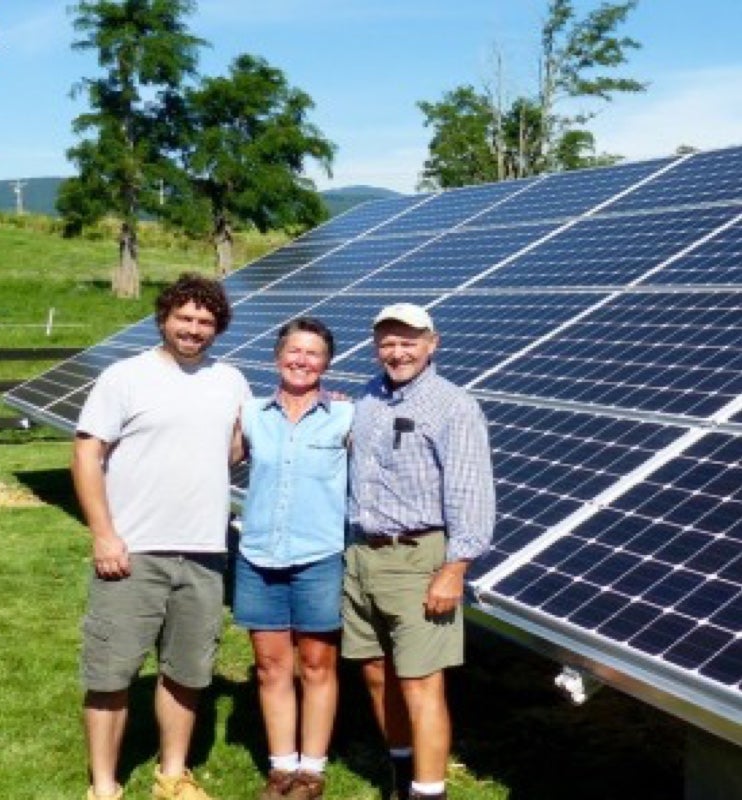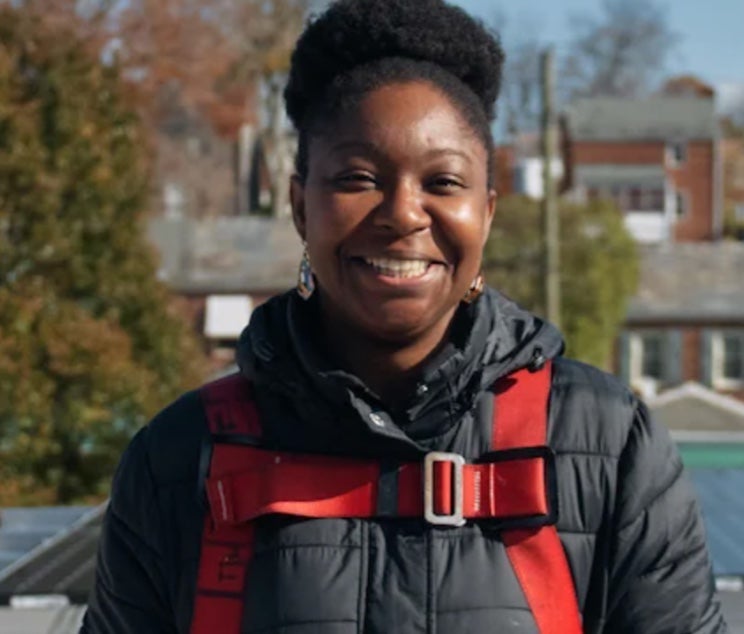How Community Solar Works
A CLOSER LOOK:
How Community Solar Works
Are you one of the millions of Americans who can’t put solar panels on your roof? We have good news: you can still benefit from solar energy—with community solar!
Community solar, sometimes called “shared solar,” makes it possible for everyone to save with solar. That includes condo and apartment dwellers, renters, and homeowners who can’t—or don’t want to—install solar on their roofs.
Wait, so where do the panels go if not on your roof? Out in your community! The solar arrays are located somewhere in your area, like a field, building, or parking lot.
The way it works is: You sign up to participate in a community solar project in your community. Then, you get to enjoy the benefits and savings from your share of the electricity they produce! The cost is often less than what you’d pay your utility company.
The Main Players in Community Solar:
Utility: The electric company responsible for delivering all electricity to your home and applying your community solar credits to your bill. The utility can be investor-owned, cooperative, or municipal.
Subscriber Organization: The operator of the community solar array, supporting you as one of their subscribers, and reporting your share of the solar energy to the utility.
Usually, the utility and the subscriber organization are different entities but not always. Sometimes, the utility can also be the subscriber organization
Customer or Subscriber: That’s you!

State Differences
The rules for how these programs work vary by state and even by utility. Some states have different size limits, leading to various pricing for subscribers. There can be differing rules on who is allowed to subscribe—for example, in some states you can subscribe if you’re in the same or an adjacent utility area.
Because each state makes its own rules for electricity service, there’s no firm structure but the general principle is always the same: install solar panels in the community and allow people to participate in getting credit for a share of the energy output.
What is a Community Solar Subscription?
In most instances, a community solar subscription means you’re buying electricity from the community solar project instead of your utility company. You don’t own the solar panels but you get a credit for the electricity they produce, which is applied to your electric bill. The electricity is measured in kilowatt-hours (kWh). Kilowatt-hours are also what you buy on your regular utility electric bill.
Less commonly, a community solar project will give you the option to buy a portion of the actual solar array. In that case, you’re buying all the electricity that your piece of the solar array produces. Depending on how many kilowatts (kW) you buy, you’ll get a certain number of kWh produced each month and applied to your electric bill as a credit.
Picture your community solar subscription as buying an item from your local family-owned hardware store instead of a national big box store. Your purchase from the community solar project is supporting jobs in your city. It helped pay for the solar company to install the panels as well as create other local jobs associated with or supporting the solar companies in the community. In addition, you know that solar is a wise choice for the future health of the planet. So being a part of a community solar project is good for everyone.
How Payment Works for Community Solar
You pay a fee to the subscriber organization, the company that manages the community solar system’s subscriptions. This fee is paid either upfront or monthly. So you are not required to work with a solar company during the system build or handle any of the stressful details. You are only buying into the completed project.
The subscriber organization tells your utility company how much electricity your community solar share produces each month. That’s how they know what to credit to your electric bill. It’s that simple and stress-free to save money each month with solar energy.
The credit value varies by state, and sometimes by utility company. Typically, it’s multiplied by the number of kilowatt- hours (kWh) your share of the community solar system generates.
In most cases, you’ll receive two bills each month: one from your utility and one from your community solar organization.
But don’t worry: two bills are less than one! With community solar, you should pay less than your current electric bill. This varies by provider and utility area, so make sure! Talk to other subscribers, speak to a local solar company to see what they know about the project, and do your homework.
On your utility bill, you’ll see a charge for the electricity you consumed from the utility, minus the number of credits you get from your community solar share. This is a great way to save money, support solar power solutions, and protect the planet when you are not able to hire a solar company to install a complete system for your home or business.
Example of Community Solar Billing
How Much of Your Energy Bill Will Come from Solar

Your community solar provider should tell you how much of the energy you use will now be coming from solar. To find out how much electricity you use on a monthly or yearly basis, you can look at one of your recent electric bills.
Generally, you shouldn’t subscribe to a community solar share that is more than 100% of your total energy usage. Any energy you buy above 100% may get paid back to you at the end of the year by the energy company, but probably at a lower rate than what you originally paid for it.
Note that the rules around this vary by state and sometimes by utility.
What Community Solar Isn’t
Occasionally, you’ll run into something that seems like community solar but isn’t. Here are some things community solar is not:
It’s not a group purchase for rooftop solar panels.
It’s not retail supply.
It’s not crowdfunding.
How Community Solar Interacts with Rooftop Solar
Most community solar regulations and programs allow you to benefit from rooftop solar and from community solar. The specifics of this will vary by program.
In general though, you can subscribe to community solar to cover whatever electricity usage your onsite solar array doesn’t cover for you so all of your energy needs can be met with locally produced solar energy.
PART 2
Next Section

WHAT TO CONSIDER WHEN SHOPPING FOR COMMUNITY SOLAR
What are the subscription options and what to know before deciding on one.
